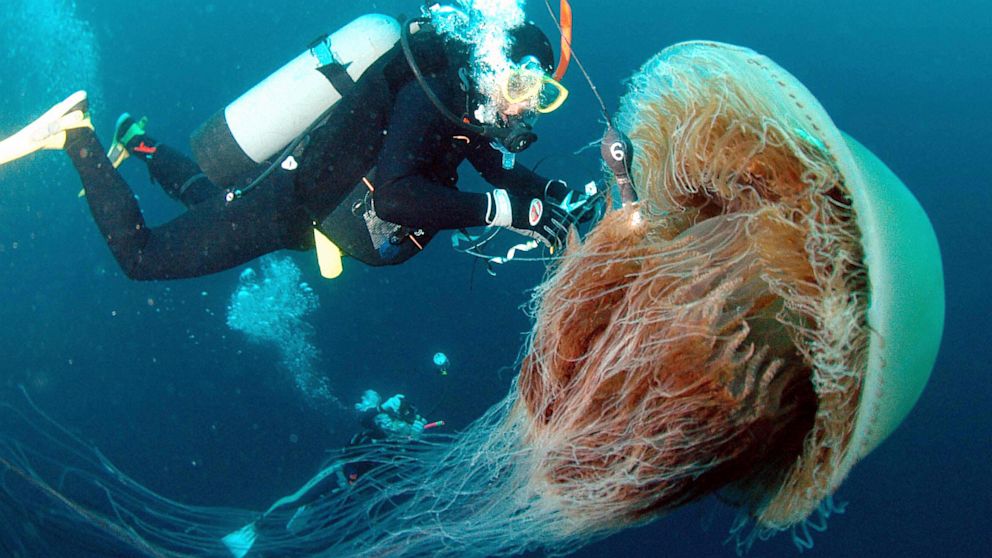Monsters of the Deep: Jellyfish Threaten the World's Seas
Jellyfish infestations are troubling tourists and scientists alike.

July 13, 2013— -- Jellyfish infestations along beaches worldwide are troubling tourists and scientists alike. It is a creature that thrives on over-fishing and pollution. But how dangerous is it for the ecosystem?
When oceanographer Josep Maria Gili steps onto the terrace from his office, he sees the crowds of people on the beaches of Barcelona at his feet. To the left lies the Port Olímpic, together with a sculpture that Frank Gehry had built there for the 1992 Summer Olympics: a giant fish made of steel, shimmering in the sunshine and gazing majestically out into the Mediterranean.
Unfortunately, it seems evident today that the renowned architect picked the wrong animal. The fish, with its gills and fins, is no longer suited as a trademark of Barcelona. Nowadays fewer and fewer fish swim beneath the glittering blue surface off the coast of Catalonia; instead, these waters are now more frequently filled with massive quantities of jellyfish.
The marine creatures -- blind and lacking both a heart and a brain, driven by waves and currents -- billow toward the coast, many with poisonous tentacles in tow, not just in Catalonia in northeastern Spain, but virtually everywhere in the world. It has become painfully clear to anyone who has had the bad luck of getting in the way of a poisonous jellyfish that this creature is the new queen of the seas. Such encounters sometimes end fatally -- for the human being, that is.
The 'Jellification of the Seas'
Oceanographer Gili's interest in jellyfish began at about the same time Gehry created his giant fish. It was an exotic discipline, even for a biologist from the Institut de Ciències del Mar. What no one could have known at the time is that today, more than 20 years later, the jellyfish has become the main topic at international conferences. Entire books are written about the supposed "jellification of the seas," and scientists argue over whether jellyfish are displacing fish and other ocean creatures, whether they are assuming control over entire ecosystems and whether we will have to eat them in the future to keep them in check, as the Chinese have done for centuries.
The fact that human beings and jellyfish tangle with one another more frequently than in the past is unpleasant for both sides. It also costs many millions each year, although the exact costs are difficult to estimate. For instance, jellyfish often cause power outages and equipment damage when they enter the cooling water systems of power plants and desalination plants.
Jellyfish are also harmful to fishery. They ruin nets and cause chemical burns on the hands of fishermen. If a jellyfish bloom collides with the nets that separate fish farms from the open water, the creatures' toxins can sometimes kill all of the animals in the enclosures.
And then there is the problem oceanographer Josep Maria Gili can see from his terrace: Jellyfish on the beach, coinciding with the vacation season, are a debacle for tourism. These days it is the reddish, glow-in-the-dark jellyfish Pelagia noctiluca, or mauve stinger, that lurks in the waters off Barcelona. In recent days, Red Cross paramedics have had to treat at least 400 swimmers a day for jellyfish injuries. A yellow warning flag is posted on the beach below, and a voice blaring from loudspeakers warns bathers in Spanish, French and English to be careful around jellyfish.
More and More Jellyfish Blooms




